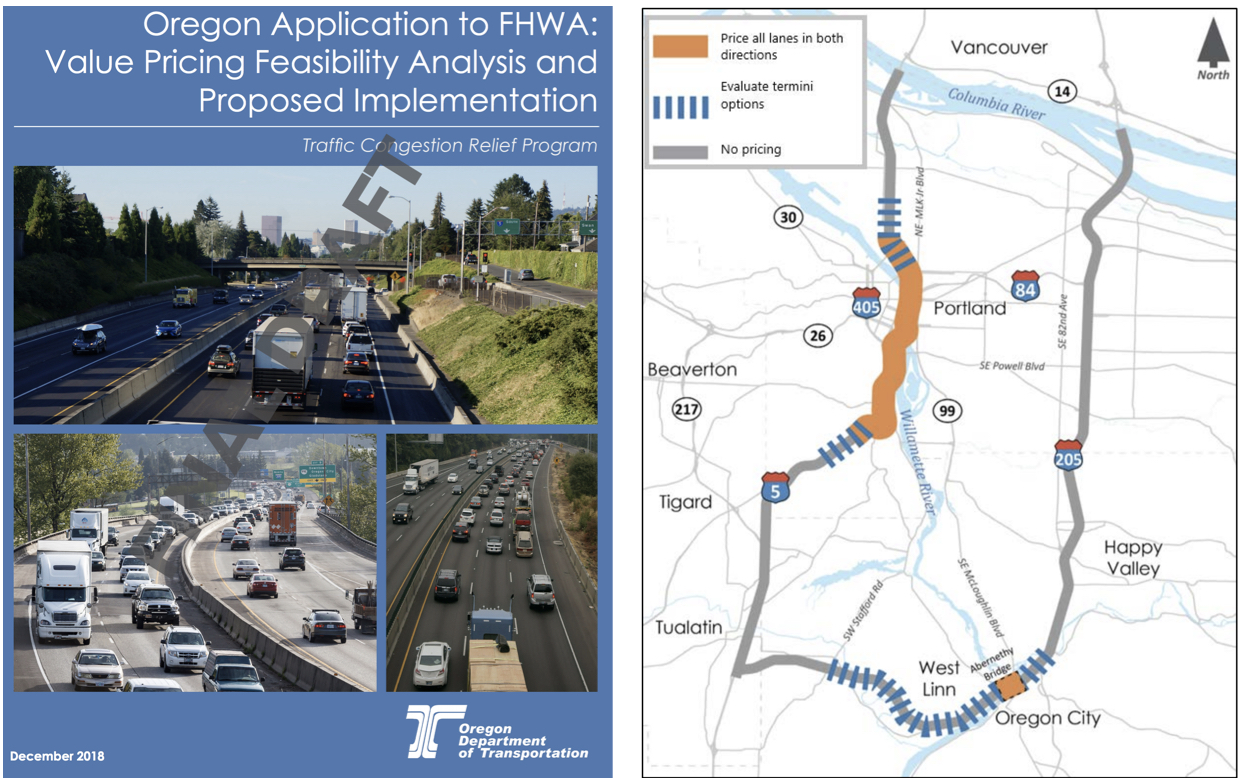
Before the Oregon Department of Transportation (ODOT) can begin any kind of congestion pricing on existing freeways, they must first submit a proposal to the Federal Highway Administration. At their monthly meeting in Salem today, ODOT’s governing body voted 5-0 in favor of that 48-page plan, marking a major step in the future of tolling in the Portland region.
In a presentation to OTC members by ODOT Region 1 Director Rian Windsheimer, the two main objectives of the plan were laid out. First, ODOT wants tolling to “create a revenue source to help fund bottleneck relief projects in the corridor.” They list two “priority projects”: widening of I-205 (Abernethy Bridge) between Highway 99 and Stafford Road; and the I-5 Rose Quarter project which will add lanes and shoulders between I-84 and I-405. The second goal is to manage traffic congestion in the I-5 and I-205 corridors.
Specifically, ODOT is asking FHWA for guidance and approval to toll I-205 “on or near the Abernethy Bridge” and I-5 “in the vicinity of N Going/ Alberta St to SW Multnomah Blvd.”
Advertisement
A policy advisory committee convened by ODOT laid out three additional priorities of the plan:
improved public transportation and other transportation options for equity and mobility; special provisions for environmental justice populations, including low income communities; and strategies to minimize and mitigate negative impacts of diversion.
ODOT needs FHWA approval in order to take the next step in analysis. ODOT says exact tolling boundaries as well as rates still need to be studied. If FHWA supports ODOT’s proposal, the agency would then take a few years to refine the projects, assess environmental impacts and determine costs associated with tolling infrastructure. “Future analysis,” ODOT said in a statement after today’s vote, “will also focus on concerns raised frequently during the feasibility analysis phase of the project, including understanding equity impacts, needed improvements to mass transit services and other travel options and minimizing diversion impacts to neighborhood streets.”
A timeline shared by ODOT today puts tolling in place by 2024 if all goes according to plan.
Among the things we’re tracking with this plan is what type of projects will be eligible for funding with tolling revenue, whether ODOT is going far enough to meet Oregon’s greenhouse gas emission targets, and how tolling might impact neighborhood streets.
Learn more about ODOT’s work on congestion pricing here and read download a PDF of their application to the FHWA here. (The “Reason Statement” begins on page 19).
— Jonathan Maus: (503) 706-8804, @jonathan_maus on Twitter and jonathan@bikeportland.org
Never miss a story. Sign-up for the daily BP Headlines email.
BikePortland needs your support.

